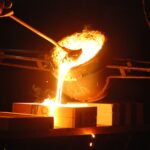Maximize Your Fitness Gains with Recovery Strategies
 Every lifter, runner, or athlete knows the importance of pushing their limits. But an often underrated aspect of fitness success is recovery.
Every lifter, runner, or athlete knows the importance of pushing their limits. But an often underrated aspect of fitness success is recovery.
Recovery isn’t just about taking a rest day, it’s a comprehensive approach to allow the body to rebuild, recharge, and come back stronger.
This blog dives into why recovery is essential for fitness and provides actionable tips to enhance your performance and well-being.
Why Recovery is as Important as Training
When you work out, you’re breaking down muscle fibers, taxing your cardiovascular system, and putting stress on your body. Recovery is the process that allows your body to repair damaged tissues, grow stronger, and prepare for the next challenge.
Without effective recovery, progress slows, and the risks of burnout or injury increase dramatically. Recovery isn’t a luxury, it’s a necessity for consistent fitness gains.
The Link Between Rest and Muscle Repair
Rest is crucial for muscle repair and growth. When you push your muscles to fatigue during a workout, microscopic tears occur in the muscle fibers. These tears are repaired during periods of rest, leading to stronger and more resilient muscle tissue.
The active recovery process can be boosted with proper nutrition, including adequate protein intake, and enough sleep to support your body’s natural repair mechanisms.
Incorporating rest days or active recovery days into your fitness program ensures you’re giving your muscles the time they need to rebuild.
How Recovery Prevents Injuries
Overuse injuries, like shin splints, tendinitis, and stress fractures, are often the result of insufficient recovery.
Training without adequate rest hinders the body’s ability to heal, putting stress on joints, ligaments, and tendons. Injury prevention should be a top priority for anyone striving for long-term fitness goals.
To avoid overtraining and reduce the risk of injury, incorporate strategies such as alternating between high-intensity and low-intensity workouts, practicing proper form, and using mobility exercises to maintain flexibility.
Tools like foam rollers, massage guns, or consultations with professionals like The Barbell Physio can improve muscle function and expedite recovery.
The Role of Sleep in Recovery
Quality sleep is one of the most powerful recovery tools available. During deep sleep, the body produces growth hormone, a critical component for tissue repair and muscle building. Additionally, quality sleep supports cognitive function, aiding your focus and motivation for future workouts.
For an optimal recovery routine, aim for 7-9 hours of sleep each night. To improve your sleep quality, establish a regular sleep schedule, create a dark and cool sleeping environment, and avoid caffeine or screens for at least an hour before bedtime.
Nutrition and Hydration for Recovery
What you eat and drink significantly impacts your recovery process. Nutrition provides the building blocks your body needs to repair muscle tissue and replenish energy stores. Hydration plays a key role in maintaining cell function and flushing out toxins.
Key Nutrition Tips:
- Protein: Consume high-quality protein sources like lean meats, eggs, and plant-based options to aid muscle repair.
- Carbs: Carbohydrates help replenish glycogen stores, the energy source your muscles rely on during workouts.
- Micronutrients: Include foods rich in vitamins and minerals, like leafy greens, nuts, and seeds, to support overall recovery.
Don’t forget to stay hydrated by drinking plenty of water throughout the day, especially after a sweat-dripping workout.
The Power of Active Recovery
While rest days are essential, active recovery days can speed up your repair process without adding undue strain. Activities like light jogging, swimming, yoga, or stretching promote blood flow to muscles, helping to transport nutrients and remove waste products like lactic acid.
Active recovery also supports mental relaxation, which can reduce stress and contribute to a holistic recovery plan. Listen to your body on these days—focus on movement that feels good without pushing your limits.
Recovery Tools and Techniques
Several tools and techniques can amplify your recovery routine, making it more effective and enjoyable:
- Foam Rolling: Self-myofascial release with a foam roller reduces muscular tightness and increases mobility.
- Cold Therapy: Ice baths or cold packs can help reduce inflammation after intense workouts.
- Compression Gear: Items like compression socks or sleeves improve circulation and aid in recovery after strenuous activity.
- Massage Therapy: A professional massage can reduce muscle tension and improve overall recovery time.
Each of these methods complements the foundation of your recovery strategy—ensuring ready-to-go performance without setbacks.
Build Sustainable Fitness with Recovery
Recovery isn’t just about physical repair; it strengthens your mental game too. Fitness success doesn’t come from endless effort alone—it’s about balancing stress and rest.
By prioritizing proper recovery techniques like sleep, active rest, and injury prevention strategies, you’ll create a sustainable path to achieving your goals.
Taking your fitness to the next level demands attention to recovery. Start by integrating these recovery strategies into your routine, and watch how your workouts—and results—transform.
For more expert insights into maximizing your fitness performance, connect with The Barbell Physio or explore additional resources on strength and mobility.




